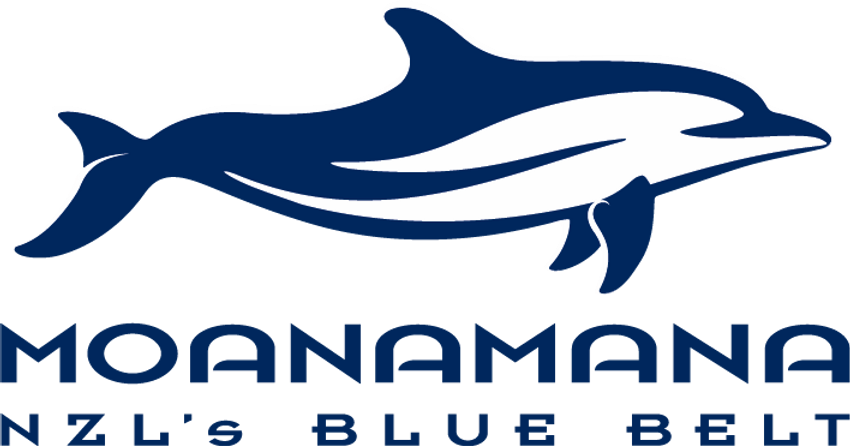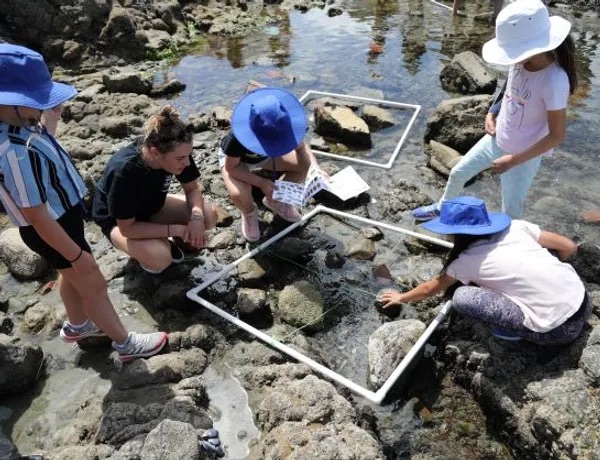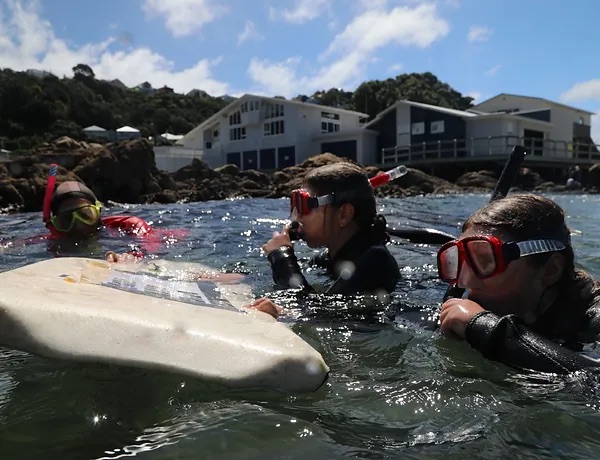
HOW IT WORKS
What is it?
Moanamana is a project developed in partnership with the New Zealand Marine Studies Centre and Coastal People: Southern Skies Centre of Research Excellence. The aim is that Moanamana connects schools and kura with their local sailing club and supports ākonga to become citizen scientists to research the impact of pollution, climate change and overfishing on marine ecosystems.

What do ākonga do?
Ākonga participate as citizen scientists to collect data from their moana. Through classroom learning, field trips to their local yacht club, data collection, analysis, and restorations projects, ākonga will take an active role in bringing mana back to the moana.

How to get involved?
Sailing clubs set up NZL Blue Belt sites in partnership with their community and cluster of schools around them. Register your school’s/group’s interest and we will let you know if there is a RŪNĀ club set up near you and share professional development opportunities for teachers.
LEARN ABOUT YOUR PLACE
These Moanamana activities will help ākonga to explore and deepen their understanding of their marine environment. Here are some examples of how Moanamana links to the Science Curriculum:
YEARS 4-6:
Investigating the living world:
Ākonga enjoy doing citizen science activities to learn about the ocean. They discover that all living things have basic life processes. They think about ways their school and community can help protect the environment.
Ākonga will extend their experiences and personal explanations of the natural world through exploration, play, asking questions, and discussion. They will learn the basics of what living things need to survive, recognise that living things are suited to their habitat, and that they can be grouped in different ways.
YEARS 7-8:
Participating & contributing to the living world:
Ākonga engage in citizen science projects to gain knowledge about the marine ecosystem. They recognise the universal life processes shared by all organisms. They then analyse how the collective actions of their school and community can have a positive impact on the environment.
Ākonga will recognise that there are life processes common to all living things and that these occur in different ways. They will explain how living things are suited to their habitat and how they respond to environmental changes, both natural and human induced. Ākonga begin to group plants, animals, and other living things into science-based classifications. Exploring how groups of living things have changed over time and appreciate that some living things in Aotearoa New Zealand are different from other areas of the world. Ākonga will use their growing science knowledge, and data, to explore various aspects of an issue, making decisions about possible actions.
YEARS 9-10:
Investigating, participating & contributing to the living world:
By actively participating in citizen science initiatives, ākonga deepen their understanding of the interconnectedness of marine life. They identify the fundamental biological processes that are fundamental to all living organisms. They then evaluate strategies for implementing sustainable practices within their school and community to promote environmental conservation.
Ākonga will explain how living things are suited to their particular habitat and how they respond to environmental changes, both natural and human induced. They will investigate the independence of living things (including humans) in an ecosystem. They will show an increasing awareness of the complexity of working scientifically, including recognition of multiple variables. Ākonga will develop and understanding of socio-scientific issues by gathering relevant scientific information to draw evidence-based conclusions and to take action.
Regardless of the phase of learning, the intention is that the activities will help ākonga to explore and deepen their understanding of our moana and changes we need to make to protect it.


Yachting New Zealand
PO Box 33 1487, Takapuna, Auckland 0740
 Admin Login
Admin Login